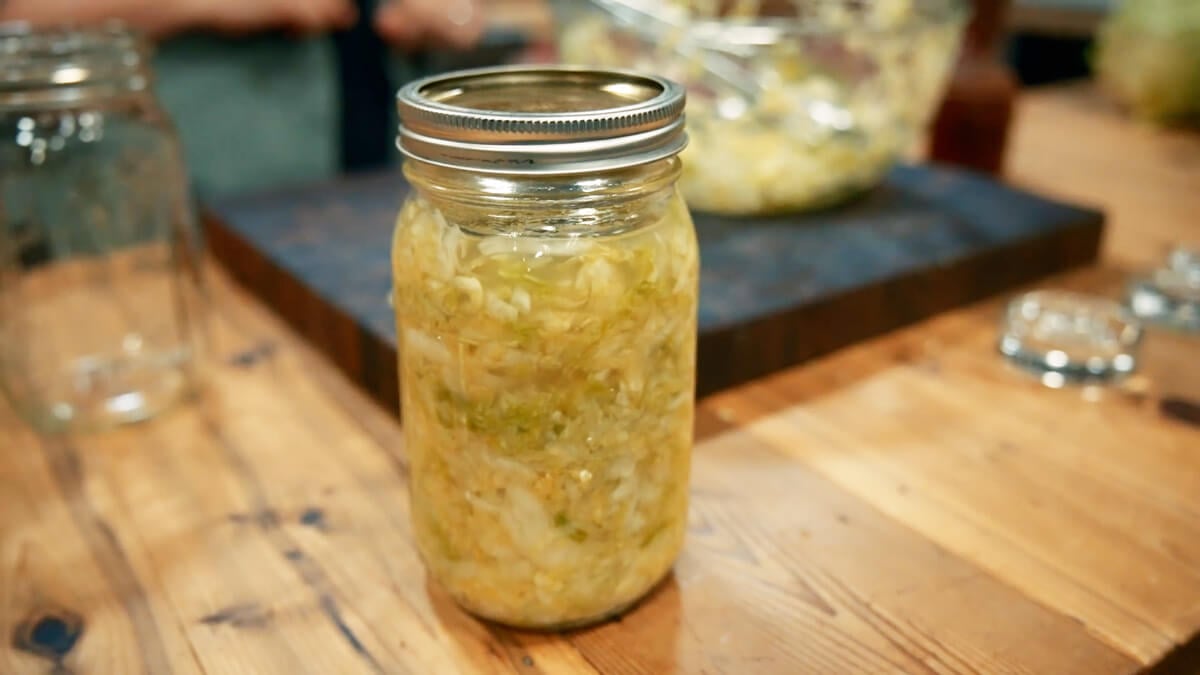Homemade Sauerkraut Recipe
3.8
(116)
Your folders
Your folders
Prep Time: 15 minutes
Total: 10155 minutes
Servings: 16

Ingredients
Export 1 ingredients for grocery delivery
Instructions
Step 1
Inspect cabbage, and remove any outer leaves that show signs of decay or bruising. These leaves can be fed to your livestock, or added to your compost pile.
Step 2
Remove a second leaf, keeping it as whole as possible, and set this leaf aside for later.
Step 3
Remove the core and set it aside for the next time you make chicken bone broth, or put it with the bruised outer leaves and feed them to your livestock or add them to your compost pile.
Step 4
Finely shred remaining cabbage by cutting against the grain.
Step 5
Place shredded cabbage in a large bowl, and sprinkle salt over the cabbage.
Step 6
Toss the cabbage with clean hands to incorporate the salt evenly throughout the cabbage.
Step 7
Toss the cabbage with clean hands to incorporate the salt evenly throughout the cabbage. After thoroughly combining the cabbage and salt, allow the cabbage to sit for about an hour to allow the salt to extract the liquid from the cabbage. Your final product should have about ⅓ of the volume as when you began.
Step 8
With clean hands, transfer the cabbage from the bowl to the quart glass jar, packing with your wooden cabbage pounder to remove any air bubbles.
Step 9
Once the cabbage is packed tightly in the jar, you will have leftover juice in the bottom of your bowl. You will use this, but first, tear off the soft part of the reserved cabbage leaf and tuck it into the jar on top of the cabbage (you can alternately use a fermentation weight.) This will help weigh it down so the cabbage remains submerged underneath the surface of the liquid. It is critical that all of the cabbage stays under the surface of the liquid, or it will mold.
Step 10
If needed, top off the jar with remaining cabbage juice, leaving about an inch of room at the top. This will avoid any spillage that may happen during any movement caused by the fermentation process.
Step 11
Cap your jar loosely with a two-part canning lid, but do not seal tight. This will prevent air from entering that’s needed for the fermentation process.
Step 12
Place your jar inside a dish to catch any overflow of the brine while it is fermenting. Leave on the counter at room temperature for about 7-14 days (give or take, depending on how warm or cool your kitchen is). You should notice the fermentation activity (or bubbling), and the smell will change to sour or acidic.